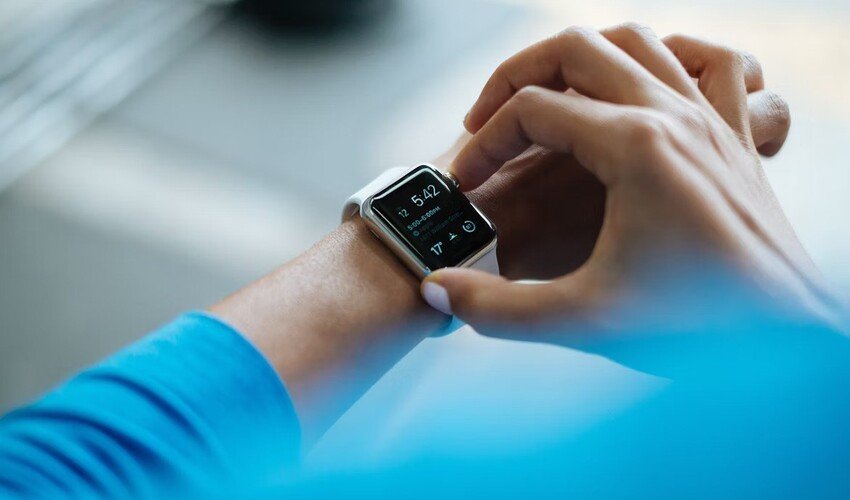Wearable technology is transforming how athletes prevent, monitor, and recover from sports injuries with precision. These devices track performance, health, and recovery data in real time.
Many athletes even combine tech-driven recovery plans with professional care like chiropractic treatment. It’s common for them to search online for a chiropractor for sports injury near me when looking for specialized support. This combination of advanced technology and targeted therapy delivers faster recovery and reduces injury recurrence.
According to Governor’s Park Chiropractic, reliable and accessible care is central to sustaining consistent therapy schedules. When this consistency pairs with wearable data, clinicians adjust treatments quickly to match real-time healing needs.
With continuous monitoring, wearable devices empower athletes to train smarter, prevent setbacks, and maintain peak performance. The result is a safer, more effective approach to sports health. In this blog post, we will explore these advancements, their benefits, and real-world applications.
Real-Time Monitoring for Early Injury Detection
Wearable technology allows athletes to monitor performance indicators in real time for early detection of potential injuries. Devices can measure joint angles, muscle strain, and movement patterns during intense activities, offering crucial insight for prevention. These measurements help identify small issues before they escalate into more serious injuries or long-term problems.
Coaches and medical professionals use this instant feedback to adjust training plans and technique immediately. Athletes no longer rely solely on discomfort to gauge potential injury risk. Instead, they gain objective, data-backed evidence to guide smarter physical activity decisions each session.
According to a study in ScienceDirect, wearable devices integrated with advanced sensor systems are transforming early injury detection. These wearables continuously track physiological and biomechanical data such as heart rate, muscle activity, and movement patterns.
The information is then processed through machine learning algorithms, producing real-time insights and predictive alerts. Researchers found that combining multimodal sensor data with automated analytics enabled injury risk prediction with up to 82% accuracy. This level of precision allows coaches and athletes to address potential issues before they become serious injuries.
Accelerating Rehabilitation With Data-Driven Recovery Plans
Sports rehabilitation often demands precise monitoring to ensure athletes recover safely while regaining optimal performance levels. Modern wearable technologies, especially AI-powered devices, enable real-time tracking and adaptive training adjustments that traditional methods cannot match.
A study published in the European Alliance for Innovation (EAI) explored the real-time monitoring effect of AI wearable devices in track and field athlete rehabilitation. These devices tracked physiological parameters, sports posture, and joint mobility to create personalized rehabilitation programs for athletes.
Real-time data analysis allowed rehabilitation teams to quickly identify problems and adjust training for better recovery outcomes. Athletes using AI wearable devices showed significantly better rehabilitation results compared to those using traditional monitoring methods. Findings suggest AI wearables enhance rehabilitation precision, personalization, and effectiveness in sports injury recovery.
By integrating these advanced monitoring tools, coaches and medical teams can design data-driven recovery plans that evolve with each athlete’s progress. This approach ensures rehabilitation remains targeted, efficient, and tailored to the unique demands of competitive sports performance.
Supporting Legal and Medical Documentation
Wearable devices have gained importance beyond training and recovery. They now support injury-related documentation for both medical and legal purposes. Data provides accurate timelines of physical activity before and after an incident.
Medical teams also rely on this information to track treatment outcomes over time. Wearable data reduces disputes about injury severity and progress. This ensures athletes receive fair evaluations and timely care throughout their recovery.
Wearable technology does more than track performance and recovery metrics. It also supports accurate legal and medical documentation when needed.
According to a 2023 comprehensive review in Elsevier, willingness to share health data depends on the data type, use, and recipient. The review analyzed 116 studies involving over 228,000 participants and found a stronger willingness for primary healthcare purposes than secondary uses.
Privacy, security, and control over data access emerged as the most common concerns across all participant groups. These findings suggest that transparent consent processes and clear communication about benefits can increase participation in data sharing initiatives.
When applied in sports injury cases, wearable data offers verifiable timelines, objective activity metrics, and credible evidence for legal evaluations. This combination of health technology and reliable documentation strengthens medical records and supports fair, informed decisions in both care and claims.
Enhancing Long-Term Athlete Performance
Wearables do more than address immediate injuries. They help athletes optimize training strategies for sustainable performance over many seasons. Metrics like heart rate variability and recovery cycles guide better workload management.
Athletes develop long-term healthy habits such as consistent hydration, proper rest, and optimal nutrition. These habits, supported by wearable feedback, lead to resilience and longer athletic careers. Wearables become partners in sustained performance.
According to the American College of Sports Medicine (ACSM), wearable technology ranked as the number one global fitness trend in 2025. This placement is consistent with previous ACSM surveys, where it has remained in the top three since 2016. Its sustained popularity highlights the role of wearables in supporting long-term performance improvement for athletes across various sports.
Frequently Asked Questions:
1. Can wearable tech completely prevent sports injuries?
No technology can completely prevent sports injuries. However, wearables can identify early warning signs like muscle strain or irregular movement patterns. By providing this information in real time, athletes and coaches can make quick adjustments, significantly lowering the likelihood of injuries.
2. Are wearable devices suitable for all levels of athletes?
Yes, wearable devices benefit both amateur and professional athletes. They deliver valuable insights into performance, recovery, and injury risk. Regardless of skill level, the data helps athletes improve training techniques, avoid overexertion, and develop healthier habits that contribute to long-term performance.
3. How does wearable tech work with traditional rehabilitation methods?
Wearable technology complements traditional rehabilitation by tracking metrics like mobility, muscle activation, and recovery speed in real time. This enables therapists to make targeted adjustments to exercise routines. The result is a personalized recovery process that ensures steady progress while minimizing the risk of reinjury during rehabilitation.
Wearable technology is reshaping sports injury recovery and prevention through accurate, actionable data. When combined with skilled care such as chiropractic and physiotherapy, it forms a powerful recovery partnership.
Athletes experience faster healing, smarter prevention strategies, and improved performance longevity. With continuous innovation, wearable devices will remain essential in safeguarding athletes’ health and enhancing future performance outcomes.
Read Dive is a leading technology blog focusing on different domains like Blockchain, AI, Chatbot, Fintech, Health Tech, Software Development and Testing. For guest blogging, please feel free to contact at readdive@gmail.com.





